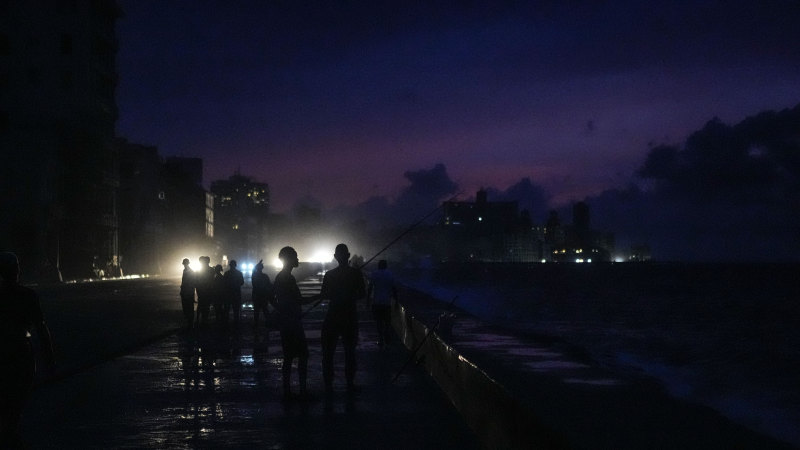
The entire population of Cuba was plunged into a countrywide blackout following the collapse of one of its major power plants on Friday and authorities had only restored a trickle of power to its grid by the evening. The vast majority of the country’s 10 million residents were still in the dark on Friday night, but scattered pockets of the capital Havana, including some of the city’s major hospitals, saw lights flicker back on shortly after dark. People in Havana during a countrywide blackout on Friday.
Credit: AP The Communist-run government had earlier attempted to avert disaster by closing schools and non-essential industries as well as sending most state workers home in a last-ditch effort to keep the lights on after weeks of severe power shortages. Recreational and cultural activities, including nightclubs, were also closed. But shortly before midday, the Antonio Guiteras power plant, the country’s largest and most efficient, went offline, prompting a total grid failure and suddenly leaving the entire island without power.
The collapse of the national grid underscored the precarious state of the Communist-run country’s infrastructure and economy. Restoration of service is under way but long-term challenges will remain. Residents pass the time in Havana on Friday.
Schools, non-essential industry, state workplaces and recreational and cultural activities were all closed. Credit: AP Why did the grid collapse? Cuba’s electrical grid and oil-fired power plants are obsolete and crumbling, constructed decades ago and scarcely maintained. And because Cuba produces very little fossil fuel of its own – with limited refining capacity – it depends almost entirely on imports to assure adequate generation.
.










